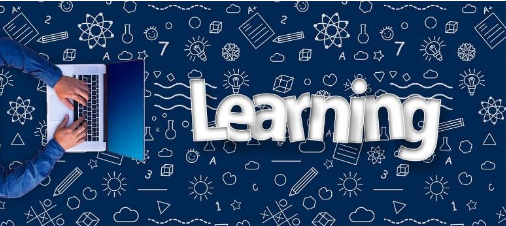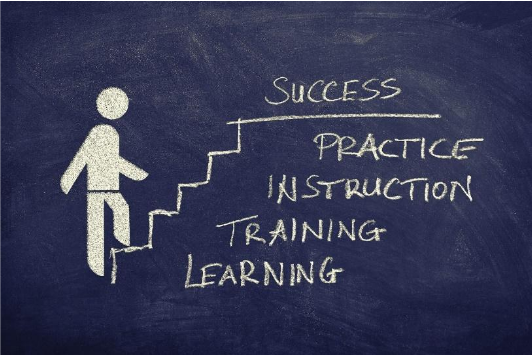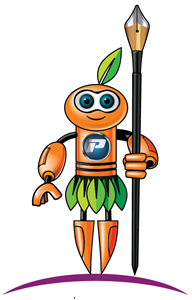28 Feb Interesting Readings
Learn How to Make Learning Easier
— Banurekha Balaji & Nidhi Prashant Augustine
Why do you Learn?
You learn to acquire new skills for your personal or professional growth. Learning new skills enables you to accomplish your goals in the short- or long-term, whilst delivering the best quality. With the right skills, you will also be able to meet your responsibilities well within the stipulated time duration.
New software and technologies are emerging at a quick pace in today’s digital world. We must keep up with the demands for new skills through learning. In the process of learning, you will gain knowledge, improve communication skills, and practice better time management.

We had a chance of developing three training courses for writers. We would like to share our best practices and lessons throughout our journey.
Learning Styles
Learning styles are influenced by various factors, including the complexity of the topic, learners’ capabilities, and individual preferences. It’s crucial to assess and select the learning style that suits you best. Here are some preferred learning styles:
- Video Demo: Microlearning, characterized by short videos lasting no more than 3 minutes, and focusing focuses on one task per video, making it is an effective method for visual learners.
- Listening (Auditory Learning): Auditory learners thrive by listening to speakers explain abstract or theoretical concepts. Podcasts have emerged as a popular trend in auditory learning, with experts sharing short audio files on specific topics.
- Touch and Feel (Haptic Learning): Haptic learners learn best through hands-on experiences, such as physically interacting with objects to understand physical laws or concepts.
- Read/Write: Some learners prefer traditional methods of reading through content and writing in journals.
Mode of Delivery
An individual’s learning can be broadly classified into two modes of delivery:
- Self-paced Learning: This mode allows learners to progress through the material at their own speed. It accommodates different learning styles and preferences, offering flexibility and autonomy. Learners can pause, replay, and revisit content as needed, which enhances comprehension and retention.
- Instructor-led Learning: In this mode, learners engage in structured learning sessions guided by an instructor or facilitator. It provides opportunities for real-time interaction, feedback, and clarification of concepts.
Characteristics of Learning Content
Good information design plays a major role in developing learning content and it helps in making theat content more efficient and effective for the learners.
The following are some of the characteristics of ‘easier’ learning content:
- Creates high impact.
- Engages with the audience by using quizzes and brain teasers.
- Crisp and concept- oriented.
- Allows learnerslearner to grasp the concepts at a very high level.
- Enables learners to get started with working on a task.
Journey to Create Learning Content
When our journey to create learning-content started, the goal was to make learning easier for any learner. We equipped ourselves with the knowledge of learning styles and the delivery methods of learning content. We identified the topic for which learning content was to be created and the targeted audience. We also decided to deliver the learning content in both the delivery modes – self-paced and instructor- led.

Develop
During this phase, initial discussions were held with stakeholders, including topic owners, subject matter experts, and the training department, to align on creating learning content and learn best practices. Thorough topic knowledge was obtained, utilizing hands-on practice for tool/application content and expert interviews for conceptual content. Content was structured to address key questions. Additionally, demos and hands-on exercises catered to visual learning, while quizzes and brain teasers reinforced auditive auditory learning. Real examples were shared to facilitate haptic learning. Instructor-led training details, including duration and participant numbers, were also determined.
Review
During this phase, learning content was validated through various aspects including relevance to the audience, balance between theory and exercise, and intermittent knowledge checks via quizzes. Reviewers, including topic owners, subject matter experts, and fellow trainers or learners, ensured accuracy, completeness, and logical grouping. They also added next steps for learners and addressed potential mistakes by documenting through tips and tricks documentation. Peer reviews facilitated an easy-to-follow flow and addressed varied audiences, while documenting common mistakes enhanced learner understanding.
Approve
Organizations rely on their learning departments to craft and execute learning strategies for employees, fostering career development. The involvement of the learning department ensures optimal learning content length and well-planned training durations with adequate breaks. For instructor-led training, the department facilitates quarterly session scheduling. Moreover, in certain regions, the learning content must undergo approval, overseen by the learning department. This process necessitates providing details such as the title, description, target audience, prerequisites, duration, and participant numbers for the learning content.
Announce
We identified suitable platforms for hosting learning content, ensuring easy access through the organization’s portal, digital libraries, or platforms like LinkedIn for generic concepts. Promotion of content availability followed, utilizing forums and mass emails to reach potential learners. Learners then register for instructor-led or self-paced sessions. Feedback from learners guides ongoing improvements, ensuring content relevance and accuracy. Regular revisions with topic owners and experts maintain content accuracy, keeping learners informed with up-to-date information.
How did we address the self-paced delivery mode?
We decided to deliver the learning content as both self-paced and instructor-led. When we delivered the instructor-led training, the session was recorded. Using a video editing tool, the entire recording was broken down to short videos not exceeding 5 minutes. Each video covers one specific task. This way, learners could complete the training at their own pace. At the end of the training, there were exercise modules shared with them for hands-on use. Later, the exercise results were evaluated, and feedback shared. This completes their learning circle.
Conclusion
When learning becomes easier, the learners act as multipliers in spreading the knowledge.
About Authors
About Banurekha Balaji
Banu with over 18 years of expertise in technical communication is currently designated as User Assistance Development Architect. She is responsible to document product-specific APIs, validate and test the API functionalities, document recommended actions for the support team, and create developer tutorials. She also trains technical writers on SAP-specific documentation tools and concepts. She has been developing training content from scratch for both instructor-led and self-paced training on documentation concepts and delivering the same for technical writers across all SAP locations. She is actively involved in mentoring budding information architects.
Current Role: User Assistance Development Architect
Company: SAP Labs
City: Bengaluru, India

About Nidhi Prashant Augustine
Nidhi with over 18 years of expertise in technical communication is currently designated as User Assistance Development Architect. She creates developer tutorials, trains authors, doc leads, and information architects on various tools and concepts. She has been developing training content from scratch for both instructor-led and self-paced training on documentation concepts for a global audience. She also mentors budding information architects. She has a patent in the area of data management.
Current Role: User Assistance Development Architect
Company: SAP Labs
City: Bengaluru, India





No Comments